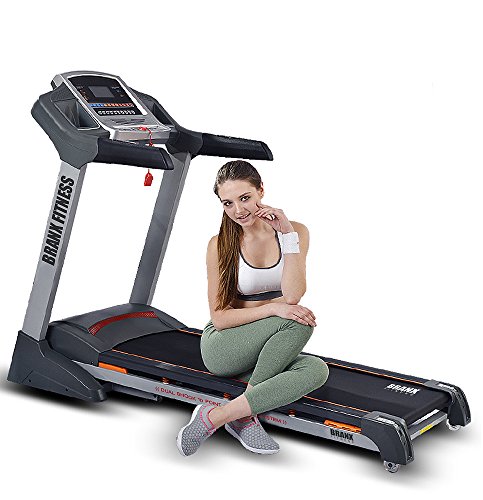What Treadmill Without Electricity Experts Want You To Be Educated
The Allure of Treadmills Without Electricity: A Comprehensive Guide
In a world significantly dominated by state-of-the-art fitness gizmos, the simpleness and practicality of a treadmill that does not need electricity might look like a throwback. Nevertheless, treadmills without electricity— often referred to as “manual treadmills”— have acquired substantial appeal amongst fitness enthusiasts seeking a more straightforward, environmentally friendly workout alternative. This blog post looks into the myriad advantages, features, and factors to consider surrounding manual treadmills, along with answering common questions from potential purchasers.
What is a Manual Treadmill?
A manual treadmill is a piece of workout equipment that permits users to walk or run without requiring electrical power. As opposed to motorized treadmills that move the belt for you, manual treadmills depend on the user's own effort to move the belt forward. Here's a fast contrast in between manual and motorized treadmills:
Feature
Manual Treadmill
Motorized Treadmill
Source of power
None
Electricity required
Operative Mechanism
User-powered
Motor-driven
Expense
Generally more affordable
Typically more costly
Portability
Highly portable
Often heavier, less portable
Upkeep
Low
Requires more maintenance
Workout Intensity
Higher (more effort)
Can be changed
Benefits of Using a Manual Treadmill
Economical:
- Manual treadmills are generally more affordable than their electrical equivalents. With a lower initial financial investment and no ongoing electricity expenses, these treadmills can be an outstanding alternative for budget-conscious individuals.
Eco-Friendly:
- As there are no motors or electrical components involved, manual treadmills are a sustainable option. They do not take in fossil fuels and leave a smaller carbon footprint.
Flexible Workout:
- Because they require the user to produce their own momentum, manual treadmills can use more extreme exercises, suitable for those aiming to increase their stamina and strength.
Mobility:
- Manual treadmills are frequently lighter and simpler to transfer. They allow users to easily save them away or move them from one place to another.
Reduced Risk of Injury:
- By enabling for a more natural running movement, manual treadmills can help reduce the danger of injury compared to motorized options. Self Propelled Treadmill have control over their rate and can stop or decrease instantly.
Secret Features to Consider
When thinking about a manual treadmill, particular features should be considered:
- Belt Quality: Look for a non-slip, long lasting surface area that uses enough grip for security throughout exercises.
- Incline Levels: Many manual treadmills come with adjustable incline functions. Higher inclines can increase workout intensity.
- Dimensions: Space can be a restriction, so examining the treadmill's footprint is vital.
- Weight Capacity: Always check the manufacturer's weight recommendations to ensure security and durability.
- Show Monitor: Some manual treadmills consist of fundamental screens for tracking elapsed time, distance, and calories burned.
Feature
Description
Belt Quality
Non-slip and durable products for safety
Incline Levels
Adjustable settings for increased workout problem
Measurements
Size and weight for ease of storage and transport
Weight Capacity
Make sure the treadmill accommodates the user's weight easily
Show Monitor
Optional efficiency tracking includes
Choosing the Right Manual Treadmill
Provided the range of manual treadmills available on the marketplace, picking the ideal one involves evaluating personal fitness goals and requirements. Here's a simplified list to guide customers:
- Assess your fitness objectives: Are you going for weight-loss, endurance, or general physical fitness?
- Consider the readily available space: Ensure the treadmill will fit well in your designated workout location.
- Look for features: Look for adjustable incline settings or added innovation such as a distance tracker.
- Research brand names and evaluations: Read about the experiences of other users to gauge the reliability and sturdiness of the design you're thinking about.
- Set a spending plan: Compare different models while keeping your budget in mind.
Often Asked Questions (FAQ)
1. Are manual treadmills suitable for all physical fitness levels?
Yes, manual treadmills cater to numerous physical fitness levels. Novices can start at a slower speed, while advanced users can increase intensity and speed.
2. How do manual treadmills impact calorie burn as compared to motorized ones?
Manual treadmills might lead to higher calorie burn throughout exercises, as users need to apply more effort to move the belt.
3. Do I require to put together a manual treadmill?
Many manual treadmills come partially assembled, however you'll likely need to complete some assembly depending on the model.
4. Can I carry out interval training on a manual treadmill?
Definitely! Manual treadmills are exceptional for interval training considering that users can quickly change their pace and start/stopping movements.
5. How do I preserve a manual treadmill?
Maintenance is easy: routine cleaning of the belt and frame, looking for wear and tear, and ensuring empty storage when not in usage.
Manual treadmills provide numerous benefits, making them an attractive choice for many fitness enthusiasts. Their energy-efficient style, integrated with the capability to provide effective exercises, has sealed their place in home fitness regimens. With a clear understanding of their functions and benefits, people can make an educated choice about whether a manual treadmill is the right option for their health journey.
The uncomplicated appeal of manual treadmills— coupled with their cost-effectiveness and sustainability— ensures they remain relevant in today's physical fitness market, offering a compelling alternative to electric designs.
